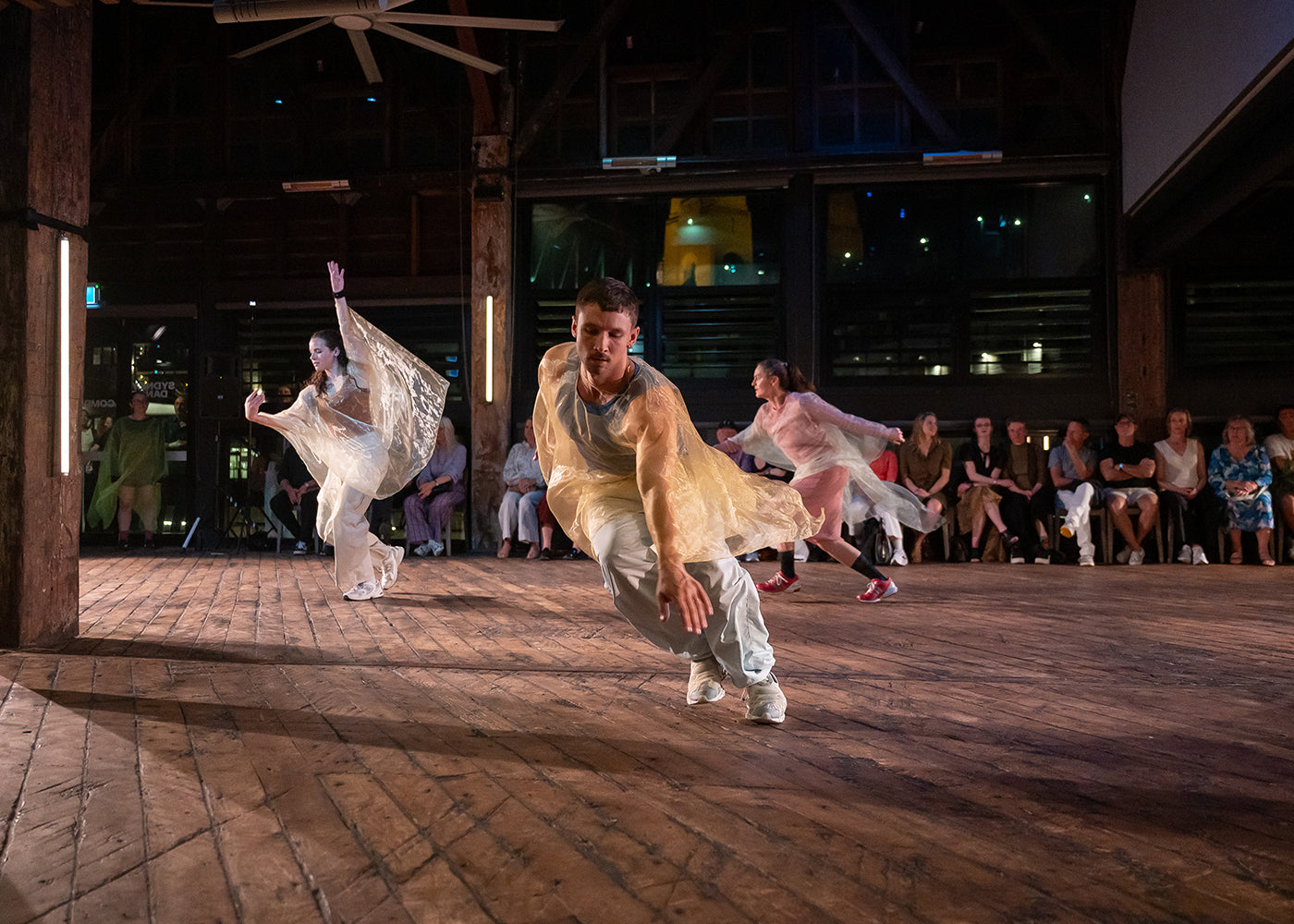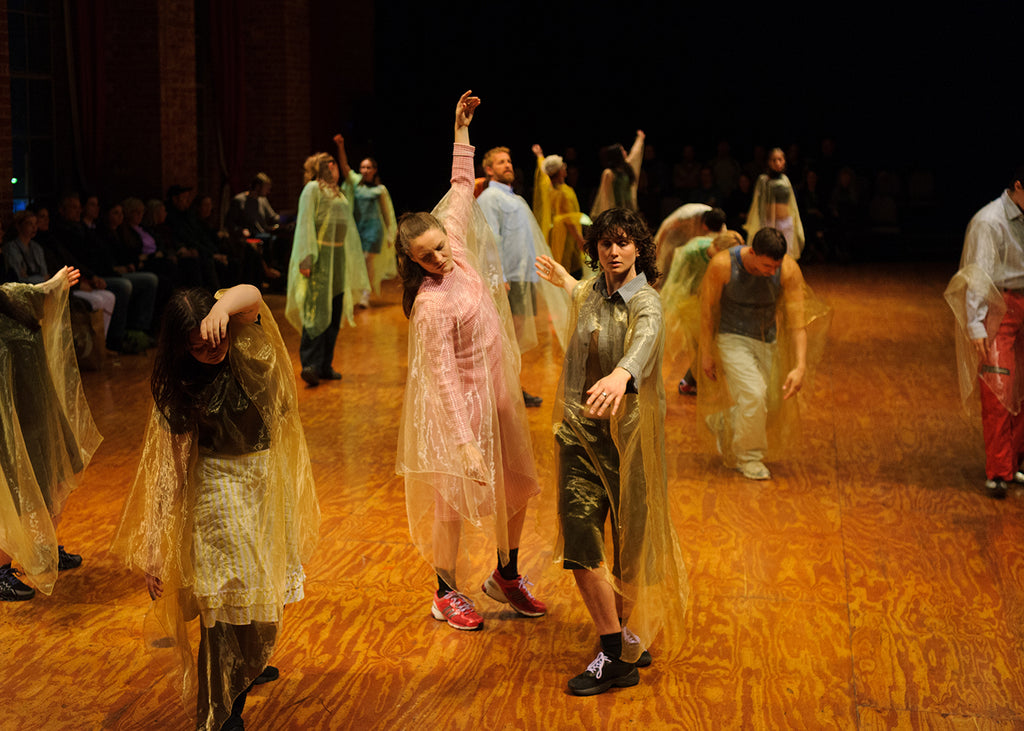Wish Come True
The Japan Society continued its Yukio Mishima Centennial Series with a newly commissioned dance work titled “The Seven Bridges (Hashi-zukushi)” based on Yukio Mishima’s short story by that name originally published in 1956.
Plus
World-class review of ballet and dance.
I make my way up the stairs at the Substation. Along all four sides of the large room, rows of seats are arranged. Event warning: sudden loud noises. Content warning: death. I find a seat along the long side wall, with my back to the window. With the red curtains open and the night sky at my shoulders, I wait. Also sitting and waiting, several of the performers. They are dotted about the room, in pairs, sitting cross-legged on the floor. They are onstage, but not quite yet. They are waiting. Identifiable by the translucent fabric that cloaks their forms, they scan the room. Make eye contact. And set the tone for the celebration, the reason I am here and, I am guessing, others too. To celebrate “dance as a vital language of friendship, community and continual transformation.”[1]
Performance
Place
Words



“Uncommonly intelligent, substantial coverage.”
Your weekly source for world-class dance reviews, interviews, articles, and more.
Already a paid subscriber? Login

The Japan Society continued its Yukio Mishima Centennial Series with a newly commissioned dance work titled “The Seven Bridges (Hashi-zukushi)” based on Yukio Mishima’s short story by that name originally published in 1956.
PlusLondon is a changed city this week. The cold front has come, and daylight hours have plummeted. The city is rammed with tourists, buskers, and shoppers.
PlusThe Royal Ballet’s new restaging of “Everywhere We Go”—the Sufjan Stevens-scored ballet that secured Justin Peck his appointment as resident choreographer at New York City Ballet in 2014—challenges the company’s dancers to adopt a specifically American brand of pizzazz.
PlusQuadrophenia is about young men . . . and I do weep for young men still, because we are still struggling,” Pete Townshend—80 years old—playfully told Stephen Colbert while promoting the latest incarnation of the Who’s 1973 rock opera and 1979 film: “Quadrophenia: A Rock Ballet,” which ran last weekend at City Center.
Plus
comments